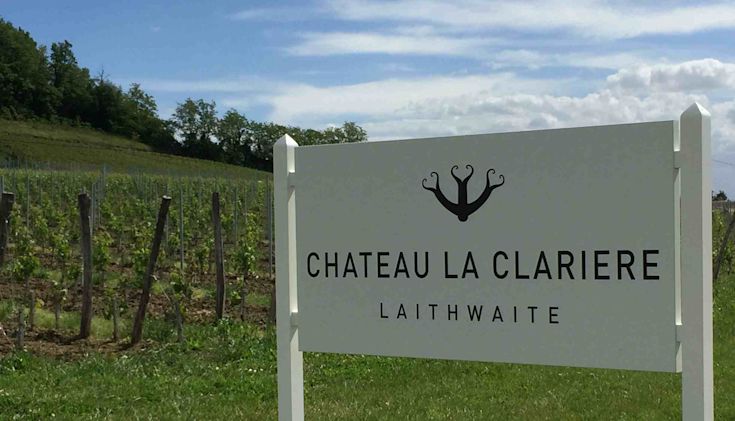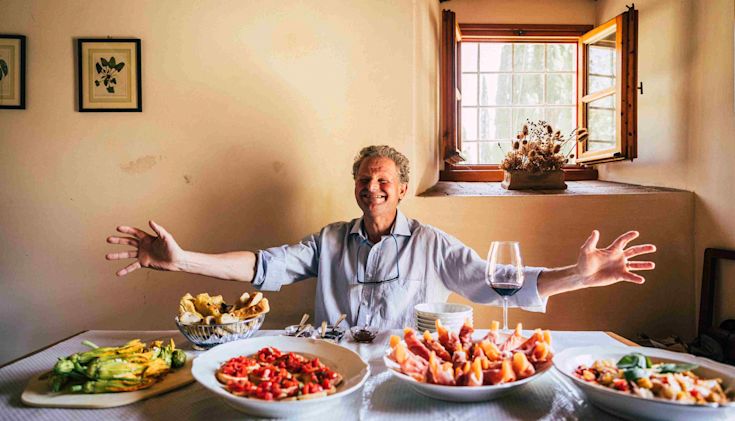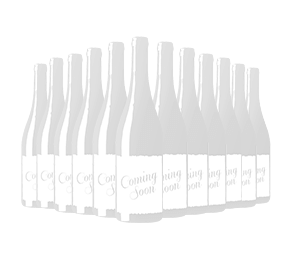Chat with Vinny
Why is wine so confusing? There are so many wine classifications out there that it can seem impossible just to decipher a label. As for all the acronyms, what’s the difference between an AOC and an AOP (spoiler: there isn’t one) or a DOC and a DOCG (there is one – read on!). It would be easy just to give up and think, I know what I like, does it even matter? But knowing the basics about wine classifications can really help you spot the good stuff.
France
We could write a whole article on the wine classification system in France, or the appellation system, but we’ll try and keep it simple here.
Vin de France is the most basic level, and grapes for these wines can come from across France. Don’t rule these out though! Winemakers are allowed the most creative freedom with wines in this category and they’re often the most affordable.
Indication Géographique Protégée(IGP) is a regional designation, so the grapes for these wines come from a particular region. For example, IGP Pays d’Oc wines come from grapes from right across the Languedoc.
Appellation d'origine contrôlée/Protégée (AOC/AOP) wines are subject to strict regulations. Not only do the grapes have to come from a specific region, but each AOC has a set of rules that dictate what grape varieties can be used, alcohol levels, yields and more.

To make it slightly more complicated, the French have a tiered system at AOC level. So you start with regional AOCs eg. Bordeaux, Bourgogne. Next come sub-regional AOCs like Médoc, Mâcon. Step up again to village/commune AOCs like Pauillac or Puligny-Montrachet and at the top of the table are the ‘Crus’ or vineyard AOCs eg. Montrachet Grand Cru.
So what’s the difference between AOC and AOP?
Sometimes you might see AOP on the label instead of AOC. It’s simply that Appellation d’origine protégée (AOP) is a European term, while AOC is the French one. French winemakers can use either term but they both mean the same.
Anything else worth knowing?
France being France, the classification systems doesn’t always stop there. In certain regions like Bordeaux, additional classifications outside the appellation can be used. Here the term ‘Grand Cru [Classé]’ is usually applied to the producer, rather than the land like in other regions.
The 1855 Bordeaux Classification in the left bank, the Crus Classés de Graves, as well as the Cru Bourgeois and the latest Crus Artisans classifications are all worth investigating in Bordeaux and can be a good way to find a quality focused producer.
Italy
Other wine classification systems used in Europe are similar to the French model, so once you’ve got your head around France, the rest are easy!
Vino da Tavola (VdT) or table wine can come from grapes across Italy.
Indicazione Geografica Tipica (IGT) is similar to the French IGP. It’s used for wines that don’t meet the criteria for DOC or DOCG wines. For example, Super Tuscans that use a high proportion of international grapes not allowed in Chianti, are labelled IGT Toscana. It’s the Super Tuscans that led to the creation of the IGT category in Italy.
Denominazione di Origine Controllata (DOC) is based on geographical areas and the wines must be made following strict rules, similar to the French AOC wines. Examples include Soave DOC and Montepulciano d’Abruzzo DOC.
Denominazione di Origine Controllata e Garantita (DOCG) usually represents the highest quality level in Italy and includes Chianti Classico DOCG and Barolo DOCG.
You will also sometimes see Riserva on an Italian wine label. Riserva wines have a longer ageing period and it varies from one region to another. For example

Spain
In Spain, the wine classification system is slightly different again:
Vino de España wines are made from grapes from different regions across Spain.
Indicación Geografica Protegida (IGP) wines don’t have to adhere to the strict regulations of DOP wines and the geographical areas they cover tend to be much wider. The wines are labelled with the VT (Vino de la Tierra) they come from. For example, VT Castilla y León.
Denominación de Origen Protegida (DOP) ensures stringent quality regulations are followed and every stage of production must happen within the region. Within wine there are four subcategories:
Vino de Calidad con Indicación Geográfica (VC) is a relatively new category and is like a stepping stone to becoming a DO. A region must spend a minimum of 5 years as a VC before applying to become a DO.
Denominación de Origen (DO) is the most widely used and regulations are imposed over grape varieties, alcohol levels, yields and more. Most of Spain’s wine regions are DOs, from Rías Baixas DO to Valencia DO.
Denominación de Origen Calificada (DOCa) is reserved for regions with particularly stringent quality controls. At the moment, there are just two: Rioja DOCa and Priorat DOCa (Priorat is technically a DOQ (denominació d'origen qualificada) which means the same as DOCa but in the Catalan language)
Vino de Pago (VP) is another new category that has been added for single estates with a high reputation. There are currently only a small number of estates with VP status.

Ageing classifications in Spain
In Spain, arguably more importance is given to the ageing classification system. These rules can vary from one region to another but in Rioja, it looks like this:
Joven: wines that have had no or minimal oak ageing.
Crianza: wines must spend at least one year in oak barrel and one year in bottle before release.
Reserva: wines spend a minimum of one year in oak barrel and two in bottle. These often have the potential to age even further.
Gran Reserva: wines spend at least two years in barrel and three in bottle. These are only made in the best vintages and from the finest grapes.
It’s worth noting that some producers are moving away from using these terms and instead focusing on single vineyards or varieties rather than ageing. In other words, a Spanish wine or Rioja can still be great, even if these ageing terms are not mentioned on the label.
Germany
Often considered the most complex wine classification system, Germany categorises its wines according to geographical areas, like France, Spain and Italy. But in addition, the wines are classified according to the ripeness levels of the grapes and sometimes the grade/quality of the specific vineyard.
Deutscher Wein – These come from grapes across Germany and are rarely seen in the UK.
Deutscher Landwein – These wines must come from one of Germany’s designated wine regions and contain less than 18g of sugar per litre.
Qualitätswein – These not only come from specific wine regions but must follow regional regulations, including the ripeness of the grapes.Qualitätswein wines are usually labelled with their sweetness level eg. Trocken (dry) or Halbtrocken (off-dry).
Grosse Gewächs (GG) – A term that can only be used by members of the VDP (Verband Deutscher Prädikatsweingüter), a group that represents Germany’s top producers. GG’s are always dry, from the producers ‘Grand Cru’ Grosse Lage vineyards and usually made from Riesling.

Prädikatswein– This is the highest quality category for German wines and within this classification, there are subcategories that indicate the ripeness and quality levels of the grapes at harvest. It is important to know that none of these wines have been sweetened, the sweetness comes entirely from the ripeness of the grapes.
Kabinet: Light in style and range from dry to medium
Spätles: Means ‘late harvest’ and these are usually medium-sweet unless labelled Trocken
Auslese: Means ‘select harvest’ and are sweeter again
Beerenauslese: Means ‘berry select harvest’ and are usually from grapes left on the vine to shrivel from noble rot – like Sauternes in France. Very sweet.
Trockenbeerenauslese: Rich, sweet dessert wines made from select, overripe, precious grapes.
Eiswein: Made from grapes that have been picked while frozen on the vine, these are very sweet.
The rest of the world
Most countries in Europe follow a similar wine classification system to those outlined above. But you’ll be glad to know, outside of Europe, there are far fewer wine classifications to try and understand! Most countries will simply label their wines using the grape variety and the region that it comes from. They rarely impose specific rules over the winemaking process and generally, winemakers have more freedom to experiment with different grape varieties and winemaking techniques.
About the author
Greg Roberts
Greg is an in-house wine educator for Laithwaites and has taught the Wine & Spirit Education Trust (WSET) courses as far afield as the US, Australia, India, and the Caribbean. He draws on his experience in wine sales, retail, management, and customer service to provide real-world relevant wine training.
Greg hosted Laithwaites ‘Wine Wisdom’ and cocktail series on YouTube, and tastes over 1000+ wine blind a year to keep his palate sharp. As any of his students will tell you, Greg loves a good Riesling – but will enjoy anything ‘as long as it’s good’!

